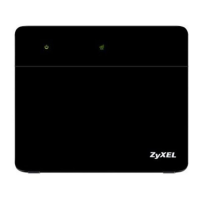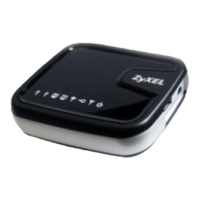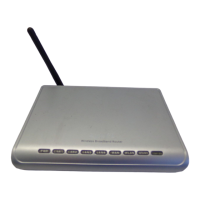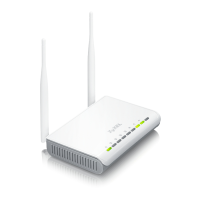Chapter 10 Network Address Translation (NAT)
VMG8324-B10A / VMG8324-B30A Series User’s Guide
169
10.9 The Sessions Screen
Use this screen to limit the number of concurrent NAT sessions a client can use. Click Network
Setting > NAT > Sessions to display the following screen.
Figure 95 Network Setting > NAT > Sessions
The following table describes the fields in this screen.
10.10 Technical Reference
This part contains more information regarding NAT.
Global Start IP This is the starting Inside Global IP Address (IGA). Enter 0.0.0.0 here if you have a dynamic
IP address from your ISP. You can only do this for the Many-to-One mapping type.
Global End IP This is the ending Inside Global IP Address (IGA). This field is blank for One-to-One and
Many-to-One mapping types.
Type This is the address mapping type.
One-to-One: This mode maps one local IP address to one global IP address. Note that port
numbers do not change for the One-to-one NAT mapping type.
Many-to-One: This mode maps multiple local IP addresses to one global IP address. This is
equivalent to SUA (i.e., PAT, port address translation), the Device's Single User Account
feature that previous routers supported only.
Many-to-Many: This mode maps multiple local IP addresses to shared global IP addresses.
Modify Click the Edit icon to go to the screen where you can edit the address mapping rule.
Click the Delete icon to delete an existing address mapping rule. Note that subsequent
address mapping rules move up by one when you take this action.
Table 67 Network Setting > NAT > Address Mapping (continued)
LABEL DESCRIPTION
Table 68 Network Setting > NAT > Sessions
LABEL DESCRIPTION
WAX NAT
Session Per
Host
Use this field to set a limit to the number of concurrent NAT sessions each client host can
have.
If only a few clients use peer to peer applications, you can raise this number to improve
their performance. With heavy peer-to-peer application use, lower this number to ensure no
single client uses too many of the available NAT sessions.
Apply Click this to save your changes on this screen.
Cancel Click this to exit this screen without saving any changes.

